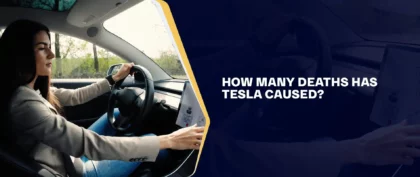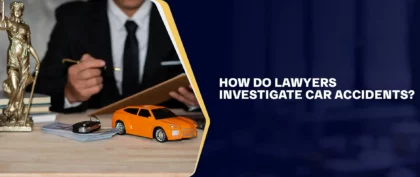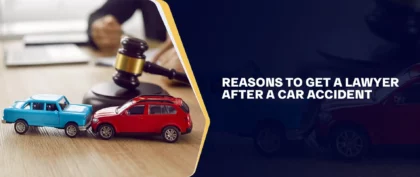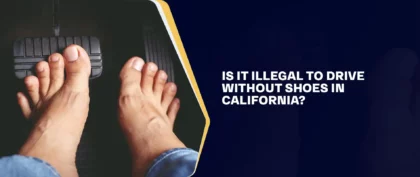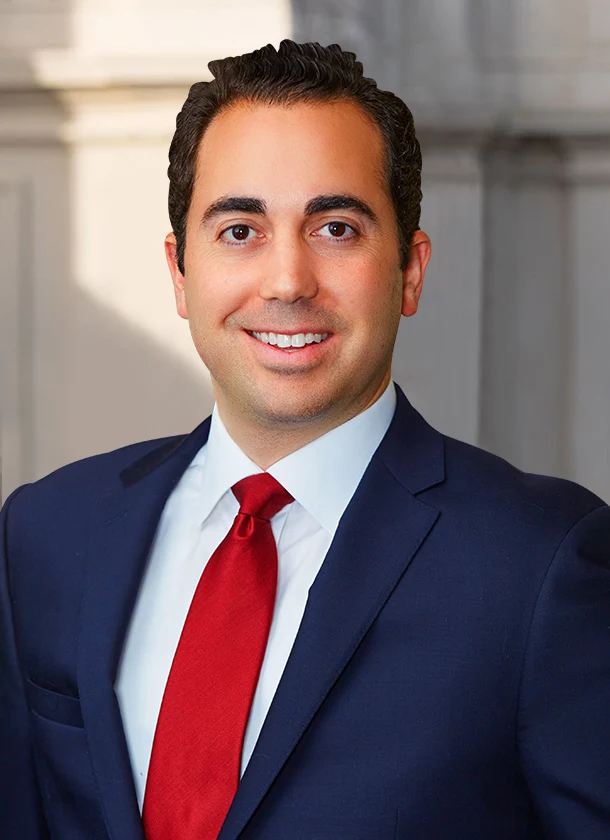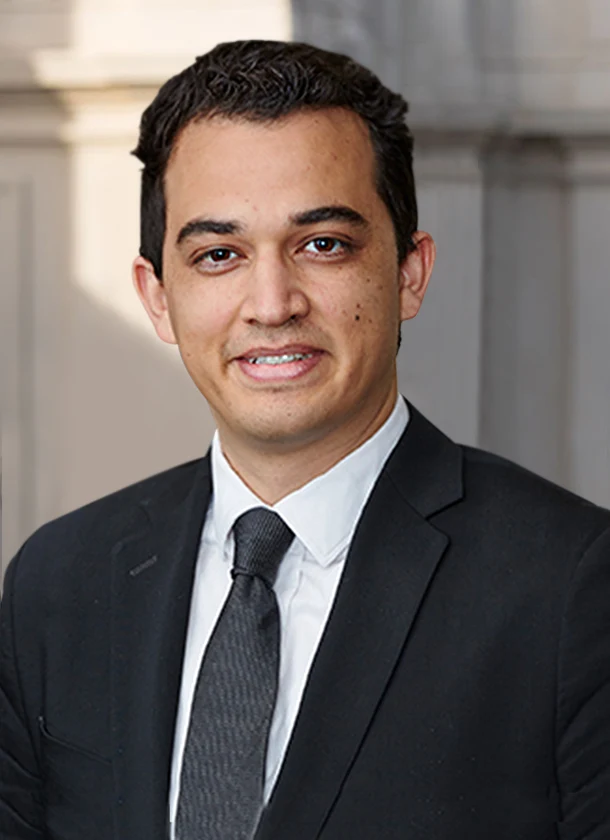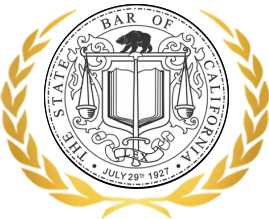Table of Contents
Halloween is a fun time for the whole family! With costume contests, parades, haunted houses, pumpkin carving, and trick-or-treating, there’s something for everyone to like. Unfortunately, Halloween can also be dangerous for everyone on the road.
Safe Kids Worldwide reports that children are more than twice as likely to be hit by a car and killed on October 31st than on any other night of the year. This tragic statistic does not have to hold true this year. If parents, children, and drivers all work together and follow the steps in this comprehensive safety guide, we can make the streets of Los Angeles and the entire state of California safe for everyone on Halloween night.
“Kids are excited about wearing costumes and trick-or-treating, but it’s up to parents to make sure they do it safely”, says Arash Khorsandi, attorney and founder of Arash Law. “Using common sense and going along with your kids is the best way to avoid an unfortunate Halloween event.”
In the untimely event that you or your child are injured in an accident, it is important to consult with a California car accident lawyer as soon as possible. You have fundamental legal rights that must be protected. An experienced personal injury attorney will help safeguard your right to be compensated for your injuries and know what to say and do to win your personal injury claim.
Call Arash Law at (888) 488-1391 to schedule your free consultation with an experienced California personal injury lawyer. Our decades of unrivaled experience in negotiating for clients mean we know what to do and not to do to ensure you receive maximum financial compensation.
Is Halloween a Problem?
When you hear the word Halloween, the first thing that comes to mind is trick-or-treating kids venturing out for candy. It’s supposed to be a fun time where parents and their kids can bond with the entire community. In reality, the dangers of Halloween lurk around every corner, especially when there is a greater number of people dressed in costumes walking in the dark and crossing streets.
You might be surprised when you hear the answer to the question, “What is the deadliest day of the year for pedestrians?” Out of all the days in the year, Halloween sees the most deaths among younger pedestrians. Several factors, including dark costumes, low visibility at night, and alcohol use among adults, often lead to this tragic outcome. Going out at night is dangerous on a normal day; what more during Halloween, when entire neighborhoods go out together?
On the other hand, from 2011 up until 2022, adult pedestrian fatalities were at an all-time high every November 1st. Several fatalities occurred in the early morning, perhaps due to an extended night out. Halloween accidents are not something anyone should take lightly.
Statistics for Halloween Driving Incidents
Every year, there is a notable spike in driving-related incidents during Halloween. Here are some eye-opening facts about Halloween driving that pedestrians and drivers need to know:
- On average, Halloween sees more than twice as many child pedestrian fatalities as other days.
- According to the National Highway Traffic and Safety Administration, children are 3x more at risk of being struck by a car on Halloween night than on any other day.
- A study in 2018 reveals that children between the ages of 4 and 8 who are pedestrians have a higher risk of dying in a car accident on Halloween than on any other day.
- In comparison to other days, Halloween led to an average of four additional deaths.
How Common Are Halloween Injuries, And What Are They?
In the United States, the Consumer Product Safety Commission (CPSC) says about 3,200 people visit emergency rooms yearly due to Halloween-related injuries. Injured individuals were predominantly adults; 46% were under the age of 18, and 10% were children under the age of 6.
The following are some of the most common injuries:
- Slip-and-fall injuries when working with decorations or walking while trick-or-treating
- Cuts and other injuries involved during pumpkin carving
- Ingestible injuries
- Allergic reactions and rashes from wearing costumes
- Lacerations from sharp decorations
- Burns from flammable decor and costumes
- Bruises and mild fractures from accidental falling or hitting on things
- Choking from small or hard candy
Additionally, with Halloween parties and gatherings, there’s a potential uptick in impaired or distracted drivers on the road, which may lead to more severe injuries or even fatalities. Both motorists and pedestrians must exercise extra caution to ensure everyone’s safety on this spooky night.
Why Is Halloween Safety Important?
Halloween is a night of fun and fright, but it also comes with its own set of risks on the road. Although the festivities are delightful, there are also several potential hazards creeping beneath the surface, such as road safety concerns and costume mishaps.
Child Safety
Halloween is predominantly a child-centric event. The streets are filled with children, many of whom wear dark costumes that are hard to see for drivers. Preventing tragic accidents begins with ensuring that your whole family abides by various safety tips for Halloween fun.
Increased Pedestrian Traffic
There is an increase in pedestrian activity around Halloween, with large groups moving from house to house. This surge increases the risk of injury, especially in neighborhoods not accustomed to heavy foot traffic.
Impaired Judgment
There’s a possibility that alcohol or drug consumption will rise during Halloween parties and celebrations. Intoxicated drivers or pedestrians can make unpredictable decisions, increasing the chances of an accident.
Costume Hazards
Costumes can restrict vision, movement, and even breathing. Kids may have difficulty spotting oncoming cars and obstacles when wearing masks. A costume or prop that is too long can also be a tripping hazard.
Unfamiliar Environments
Families and children often search for the best treats in unfamiliar neighborhoods. Using unfamiliar routes or ignoring specific hazards can lead to unforeseen accidents.
What Drivers Can Do to Stay Alert on Halloween – Tips for Driving Safely
All drivers have a duty to drive safely. This means that they must use reasonable care when driving and react appropriately to hazards on the busy streets of California. On a dangerous night like Halloween, drivers must be extra cautious to avoid hitting children on the roadway.
Drivers who fail to do so can be found at fault for causing an accident. This makes them legally obligated to compensate the victim for all the losses he or she suffers from the accident.
Here are some important Halloween driving safety tips all drivers need to follow:
 Slow down!
Slow down!
As a driver, the single most effective thing you can do to reduce your risk of causing an accident is slowing down. This gives you more time to react to hazards and obstructions in the roadway. (It also reduces the severity of injuries sustained in an accident, which can make the difference between life and death.)
On Halloween night, there are many children on the sidewalks. They are not familiar with the rules of the road. They are impulsive and excited, making them more likely to dart into the roadway unexpectedly. Slow down and be prepared to react quickly.
 Don’t text and drive.
Don’t text and drive.
Using a mobile device while driving is a dangerous thing. Some drivers feel they are experienced enough that they know how to safely text and drive. This is simply not true. Research has repeatedly found that distracted drivers have delayed response times and are more likely to cause traffic accidents.
Texting while driving is especially dangerous on Halloween. There are more pedestrians on the road, and children are more likely to act unpredictably. Drivers need to be more focused than ever when driving in these conditions. The California Vehicle Code prohibits drivers from texting while driving. Drivers should always follow this law. The importance of this is magnified during Halloween.
 Don’t drink and drive.
Don’t drink and drive.
Like texting, it is always illegal to drive while intoxicated. But on Halloween, it is especially critical that drivers follow this law. Many adults host Halloween parties or go out to bars to celebrate. The temptation to drive after drinking can be intense.
But with so many children on the streets, drunk driving can be more deadly than usual on Halloween. It’s best to assign a designated driver to take you places. And with the wide availability of rideshare services like Uber and Lyft in the Los Angeles area, there is simply no excuse to drink and drive. Get an affordable ride on-demand from your smartphone. It could save a life.
 See and be seen.
See and be seen.
It is essential to ensure your vehicle is visible to other road users. Use your headlights – even if it is not yet dark. Use your horn as necessary to get the attention of other drivers, bicyclists, or pedestrians who do not see your vehicle. Look carefully in all directions before proceeding through an intersection.
Dark costumes and masks can make it even more difficult to see pedestrians on the roadway. Use your turn signals and hazard lights to alert other drivers to your movements.
 Yield to young pedestrians.
Yield to young pedestrians.
Even if you technically have the right-of-way, be prepared to give it up. It is better to wait a few extra seconds than to cause a devastating accident. Remember, children do not understand the rules of the road. They do not have an adult’s experience yielding to other road users.
On Halloween, they are also excited and will often run in and out of the road in their eagerness to get candy. When a vehicle stops to let kids out, the candy-hungry children might dash out of the car without checking the road around them. Drivers must be prepared to react to these conditions. Allow extra time and space for stopping on Halloween.
 Don’t pass stopped vehicles.
Don’t pass stopped vehicles.
On Halloween, stopped vehicles are often dropping off trick-or-treaters. These children are unfamiliar with road rules and are excited to get out of the vehicle and start getting candy. Children can run out of vehicles as soon as they stop. They might run into the road or make other unexpected movements.
Allow stopped vehicles plenty of space in the roadway. Rather than speeding around a stopping vehicle, stop and give the driver plenty of time. Look carefully in all directions around the vehicle for children. Only pass the vehicle once you have fully stopped and checked for pedestrians in all directions.
 Be careful of your own costume.
Be careful of your own costume.
A costume can get in a driver’s way and interfere with the safe operation of the vehicle. If your costume involves loose parts or footwear that may slip from the pedals, wait until you get to the party to put it on. Driving more carefully is especially important if your costume involves a mask. Restricted visibility is even more dangerous on Halloween, and there is no reason to wear a mask while driving.
Teach children to buckle up every time.
If you are driving your trick-or-treaters around on Halloween, you will likely make several short trips between blocks or neighborhoods. You might be tempted to skip the seatbelt during these short trips. But an accident can occur any time you are in a vehicle, regardless of how short the trip is. Children must be taught to buckle up every time the vehicle is in motion.
The National Highway Traffic Safety Administration (NHTSA) reports that seatbelts saved nearly fifteen thousand American lives in 2017. Appreciating their importance, about 91.6% of Americans used seatbelts in 2022. Seat belts should always be worn – especially on Halloween when there is an increased likelihood of being involved in a traffic accident.
 Be careful when backing up.
Be careful when backing up.
It’s worth saying again: children do not comprehend the rules of the road. They make many unpredictable movements. This is especially dangerous for a driver who is backing up. A short child might not be able to be seen in a rearview mirror – especially if your vehicle is tall.
Backup cameras have become standard equipment in many vehicles. They have helped reduce backup accidents and prevent injuries. However, drivers need to look for themselves rather than relying solely on a backup camera. Check carefully for children who are anywhere near your vehicle. When it is clear, begin reversing very slowly. Cover your brake and be prepared to stop quickly. Make sure your lights are on and your vehicle can be clearly seen.
What Parents and Children Can Do to Stay Safe When Trick-Or-Treating
While drivers have a responsibility to watch out for children in the roadway, it is also vital for parents to teach their children road and Halloween safety rules and supervise them to be sure these rules are followed. Families should have a safety discussion long before the costumes are put on.
Here are some important trick-or-treat safety tips for parents and children:
Be seen. The more visible your little ghosts or goblins are, the better drivers will be able to see them. Add reflective tape or paint to the costumes. Give your child a glow stick or flashlight to use while outside. Light-colored fabrics and other visible pieces can be worked into a costume design to help your child be seen while out on the roads.
Other Halloween costume safety tips for parents and kids:
- Avoid sharp or long swords, canes, and sticks when choosing a costume accessory. These accessories can cause serious injury to your child if he or she stumbles or trips on them.
- The label of a costume should say “flame resistant.” This should also be indicated on accessories and wigs.
- Make sure that shoes fit perfectly and that costumes are short enough so people won’t trip or get caught in firepits.
- The hat should be fitted properly to prevent it from sliding over the eyes and obstructing vision.
- Be sure your child’s costume will not trip them or impair their vision. Many children’s costumes are sold in one size. This makes it difficult to find a costume that will properly fit your child. Costumes that are too long can pose a tripping hazard and distract children from keeping their eyes on the road.
Be sure your child’s costume fits before heading out into the streets. Masks, wigs, hats, face paint, and other costume pieces can also impair a child’s vision. This, too, can prevent them from watching out for traffic and seeing hazards in the roadway. Trick-or-treaters can also wear non-toxic makeup or decorative hats as an alternative to masks. Be sure that your child can see clearly throughout the night.
If you’re considering wearing contact lenses for a costume, consult an eye care professional before using decorative contact lenses. Wearing decorative contact lenses without a prescription is dangerous and illegal. Even a short time wearing them can lead to serious eye problems and permanent vision loss.
- Teach children how to cross streets safely. AAA reminds readers that children should cross the road only at corners and crosswalks. They should be taught to look both ways before crossing. Never cross between parked vehicles or mid-block. Be prepared to yield the right-of-way to a vehicle. Even if you have the right-of-way as a pedestrian, the driver might not see you. It is always better to wait and avoid an accident.
- Follow your younger children on their neighborhood rounds at all times. During the evenings, 6 PM through 9 PM are the riskiest times for children to walk. With the number of people out and about during Halloween, there is a huge chance of an accident waiting to happen. If trick-or-treating doesn’t begin until after dark where you live, check with your town or park district about Halloween activities.
- Consider community Halloween programs. Many groups offer Halloween events that are open to the community. These can include haunted houses, indoor activities, or “trunk or treat” events (in which children trick-or-treat at participating vehicles in a designated parking lot). By keeping traffic out of the area and ensuring adult supervision, these events can be safer for children than trick-or-treating on busy roadways. When children are younger or have special needs, community events are an excellent way to participate in Halloween fun without facing the risks of traditional trick-or-treating.
- Plan your child’s route ahead of time. Parents should know their child’s route to ensure it is safe and so they know where their child will be. Instruct children to travel only in familiar areas and along established routes. Travel the route ahead of time to look for blind corners, dangerous intersections, or other hazards along the way. Make sure you plan and review the acceptable route if older children are trick-or-treating alone. Establish a specific time for them to return home. Pack a flashlight with batteries in their bags to ensure they have no issues navigating the neighborhood at night.
- Be sure there is a fully charged phone available. Children should always be able to call for help while trick-or-treating. If you are accompanying younger children, be sure your phone is charged and has a signal before heading out. If older children are trick-or-treating on their own, be sure they have more than one phone available in their group. Be sure your child knows how to use the phone to call either you or 911 in the event of an emergency.
- Always use the sidewalk on well-lit streets. Motorists may have difficulty seeing trick-or-treaters. Many drivers can’t immediately react to kids running across the streets. So, you need to exercise caution as well. Look for homes with porch lights and, ideally, well-lit pathways. In the absence of a sidewalk, walk on the far edge of the road facing traffic.
- Watch out for candles, jack-o-lanterns, luminaries, and other open flames. There are many open flames on Halloween night. Candles are used in decorations, such as luminaries and jack-o-lanterns. Some houses might have a fire pit for s’mores or to ward off those cool Los Angeles ocean breezes. Children must be prepared to watch out for these hazards. Teach children what to look for and what to do if they accidentally knock over a flame. Be sure that all costumes, wigs, and accessories are fire retardant. Consider using a flashlight or LED flameless candles in your pumpkin rather than traditional candles with open flames.
- Cross the street together as a group. The American Academy of Pediatrics reports that about 62% of child pedestrian traffic fatalities occurred mid-block rather than at intersections. You should teach your children not to cross the street between parked cars or out of driveways or alleys.
- Children should be warned about distracted walking. Kids should be taught that pedestrians need undivided attention on the road just as much as cars do. Tell them that texting, chatting with friends, browsing apps, or getting lost in their favorite music can make them less aware of their surroundings. Leading by example and establishing ground rules for device use while walking can go a long way toward ensuring the safety of children.
- Keep your dog indoors. This step is critical to add to your “how to prepare for Halloween” list. When repeated buzzing triggers their protective instinct, even the sweetest dogs may experience stress and become aggressive. If you want to keep them out of the way, put them in a separate room or a comfortable crate. In addition to keeping the kids safe, you’ll also keep your dog safe.
- Check your kid’s candy. It’s also important for parents to supervise young children while they enjoy their treats and to sort through candy, removing any that might pose a choking risk for smaller children. To prevent choking on small candies, always ensure children are seated while eating and not running or playing. Encourage them to take small bites, chew thoroughly, and avoid talking or laughing with food in their mouth. Keeping a watchful eye and promoting mindful eating can ensure a fun and safe Halloween for everyone.
Why Should Parents Check Their Kids’ Candy?
While the vast majority of candy distributed during Halloween is safe, it’s a good practice for parents to be involved and ensure their children’s safety and well-being.
Over the years, there have been sporadic reports of tampered candy during Halloween. While these instances are rare, it’s always better to be safe than sorry. Checking can help ensure that the candy hasn’t been tampered with. Toss any candy that is not fully wrapped.
Some children have food allergies, and not all candy will clearly list its ingredients on the individual wrappers. Parents can identify and remove candies that might trigger an allergic reaction. Some families may have specific dietary restrictions for health, religious, or personal reasons.
As mentioned earlier, some candy can be a choking hazard for younger children. Hard candies, gumballs, or small toys can pose a risk. Not all candies are created equal. Some might be past their expiration date or have been stored improperly and are no longer good to eat. Parents can check for signs of spoilage or poor quality. As for homemade treats, the best thing to do is refuse them unless you personally know the person who made them.
Additionally, going through candy with your child provides an opportunity to discuss moderation, nutrition, and the importance of making good food choices.
Tips for Safe Trick-or-Treating During The COVID-19 Pandemic
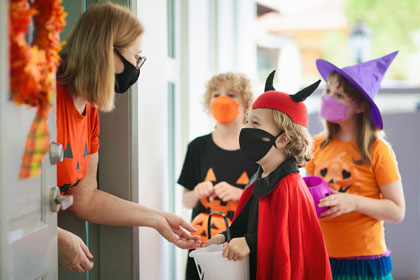
While the COVID-19 pandemic officially ended in May 2023, people, especially parents, are still on the fence about the safety of their kids. With the COVID-19 pandemic affecting everyone’s lives over the past years, parents are still concerned about letting their children join in on Halloween festivities or skip it again this year. Yes, it’s no longer a public health emergency. However, contracting COVID-19 still poses a huge risk to those more susceptible, including young children.
The risk of contracting COVID-19 during Halloween festivities may be reduced this year for families who have received the full COVID-19 vaccine. When it comes to trick-or-treating and other Halloween traditions, safety should always come first, especially if your children aren’t yet old enough to be vaccinated.
If you ever decide to let your children trick or treating this year, here are some helpful tips to keep your children safe from getting infected with COVID-19:
Be Aware of Local Rules for Halloween
Be sure to familiarize yourself with the regulations in your area. As a precautionary measure, some communities have banned trick-or-treating altogether during the pandemic. It’s a good idea to double-check with your city hall, sheriff’s department, or homeowners’ association before taking your costumed kids for a walk. You don’t want to get into legal trouble over a few mini candy bars, do you?
Wear a Face Mask
People are encouraged to wear their face masks properly to prevent COVID-19 transmission. If your community does allow trick-or-treating in your area, make sure to teach your children how to wear a mask properly and to avoid removing it while they’re outside. According to the CDC, everyone should wear fabric masks to avoid being exposed to the virus. People who have not been vaccinated should wear face masks in crowded events or large gatherings indoors and outdoors with a high risk of COVID-19 transmission.
Even if your costumes include a mask, you and your children should always wear approved masks, such as surgical masks or cloth coverings. The coronavirus is far more terrifying than any monster mask could ever hope to be.
Encourage Your Kids to Use Candy Buckets
During the holiday season, it’s critical to adhere to the six-foot social distance rule. Trick-or-treaters should keep their distance from strangers by using candy buckets. To get candy from a house, see if you can get it from a bucket the homeowner watches from a safe distance. You could even use the bucket as the arm of a scary scarecrow by attaching it to a stick and incorporating it into your child’s costume. Even better, homeowners can toss the candy into the bags themselves.
Don’t Forget to Sanitize and Wash Your Child’s Candies
When you get home with your child’s new stash of sweets, wash all wrappers with soap and warm water. Candy that might melt if exposed to warm water should be kept out of reach of children for a minimum of three days. According to the Centers for Disease Control and Prevention, the virus should become inactive and non-contagious during this time. Also, throw away any candy that the manufacturer hasn’t packaged.
There is nothing wrong with letting them trick-or-treat on their own if you believe that it can help them develop their independence. However, you should ensure that your child has the maturity and ability to follow COVID-19 safety practices. Suppose you aren’t confident enough to let your child go trick-treating alone because of the current situation. In that case, there is absolutely nothing wrong with dressing up as well and joining them in the Halloween festivities! Make sure to thoroughly teach them about the importance of following COVID-19 safety guidelines and how to decrease your chances of transmitting the virus.
Frequently Asked Questions
Why is trick-or-treating dangerous?
Trick-or-treating, a cherished Halloween tradition, carries underlying dangers that extend beyond the age-old fears of candy tampering. While urban legends surrounding tainted candy from strangers have stirred anxieties for decades, thorough investigations indicate that such threats are largely exaggerated and unfounded. However, the true perils of Halloween lie elsewhere.
Children are notably more vulnerable to vehicular accidents on this night, with studies highlighting that they face a higher risk of being struck by cars on Halloween than on any other day. Additionally, costumes, while festive, can pose a safety risk. Beyond these, the sheer excitement and unfamiliarity of the evening can compromise a child’s usual caution, emphasizing the need for parental guidance and vigilance during the celebrations.
When did trick-or-treating become dangerous?
In the U.S., trick-or-treating has garnered widespread media attention due to urban myths and rare incidents. Tainted candy reports began to appear in the 1960s and 1970s. In 1964, 47-year-old Helen Pfeil reportedly handed out dog biscuits and ant poison to teenagers she considered too old for trick-or-treating. Although these items were already marked as harmful, the incident fueled fears of candy tampering.
Another significant case that fueled the Halloween candy paranoia was the 1974 incident where a father, Ronald Clark O’Bryan, poisoned his son with cyanide-laced Pixy Stix in an attempt to claim life insurance money. He tried to cover up his crime by suggesting that the candy was obtained from trick-or-treating.
These isolated incidents, combined with other hoaxes, led to widespread fear. Exaggerated stories in the media exacerbated parental anxiety. It had become widely accepted that trick-or-treating was dangerous by the 1980s. Hospitals began offering free X-ray screenings of Halloween candy, and parents were urged to check their children’s treats carefully.
Although candy tampering is statistically rare, it is often overhyped. The dangers of trick-or-treating come with some genuine risks, such as traffic accidents and other Halloween injuries, which remain a consistent concern.
Is it safe to go trick-or-treating?
Trick-or-treating is much like letting your kids ride their bikes around the block – generally safe – but you still put on helmets and kneepads just in case. You need to know how to stay safe on Halloween to ensure a good time. With a sprinkle of safe trick-or-treating practices on Halloween’s magic, kids can safely enjoy their quest for treats.
How can I be careful for Halloween?
Take no chances by adhering to our Halloween safety tips for parents. While most neighborhoods warmly embrace this festive tradition, parents should:
- Inspect candies for anything suspicious. When in doubt, throw it out.
- Ensure costumes don’t trip kids or obscure vision.
- They should remind kids about not going inside strangers’ homes.
In today’s world, it’s also wise to consider health guidelines involving COVID-19 and other possible health concerns stemming from trick-or-treating.
How many injuries happen on Halloween?
The number of injuries that occur on Halloween yearly can vary, and specific numbers might change from year to year based on various factors like weather conditions, participation rates, and public awareness campaigns. However, according to the CPSC, Halloween-related injuries result in about 3,200 emergency room visits in the United States on average annually.
What is the most common injury on Halloween?
In 2022, the CPSC reported that 55% of Halloween injuries are related to pumpkin carving. Meanwhile, 25% are from falls while working on decorations and tripping on costumes while trick-or-treating, and 20% of injuries involved rashes and allergic reactions to costumes and other minor injuries.
What are the injuries from carving pumpkins?
Pumpkin carving may cause severe lacerations to the hand and fractures to bones and tendons if precautions are not taken, according to the American Society for Surgery of the Hand (ASSH). Knife and palm wounds are the most common accidents associated with pumpkin carving.
The National Children’s Hospital in Columbus conducted research on holiday-related pediatric injuries. As reported in the study, Halloween was one of the three holidays that produced the most ER visits, with the majority of injuries being to the fingers and hands. Lacerations comprised 33.3% of those injuries, while fractures made up 20.1%. Of those injured, 30.3% were children aged 10-14.
What are the safety rules for Halloween for kids?
Halloween is an exciting time for parents and kids alike. However, safety comes with preparation. From planning your route to inspecting the night’s candy haul, here are some important Halloween safety tips for kids to ensure fun and safety for your little ghouls and goblins:
- Plan Your Route – Make a plan for trick-or-treating ahead of time. Prioritize well-lit houses in known neighborhoods. Stick to sidewalks and paths, cross streets at crosswalks, and always look both ways.
- Enhance Your Visibility – Trick-or-treat during daylight or early evening. Carry flashlights and use glowing accessories like necklaces or bracelets. Add reflective strips to costumes for car headlight reflection. Masks can hinder vision; face paint is a safer, clear-vision alternative.
- Constant Communication – Always have your phone ready for any calls or messages. Explain to your kids the importance of immediately notifying you of anything that might make them feel unsafe.
- Inspect Your Loot – Check candy for choking hazards and allergens. Discard candies with broken seals or from unfamiliar sources, especially homemade treats.
Remember, Halloween is about fun! Keeping safety in mind ensures a memorable night. And once the kids are asleep, parents can enjoy a treat for themselves!
What Are Some Safety Tips for Halloween Night for Adults?
While many Halloween safety tips for trick-or-treating are aimed at children, adults, too, should keep in mind several precautions during Halloween. Halloween offers adults a unique opportunity to dress up, but it’s crucial to prioritize safety when selecting a costume. Make sure you’re visible and comfortable wearing the costume of your choice.
A few safety measures can go a long way for those attending or hosting a Halloween party. Ensure that decorations are flame-resistant, and be cautious with candles. If alcohol is part of the celebration, know your limits, stay hydrated, and always have a plan for getting home safely—whether it’s designating a sober driver or utilizing rideshare services.
There’s safety in numbers. Whether you’re walking in the neighborhood or heading to an event, consider doing so in groups or, at the very least, informing someone of your whereabouts. Depending on the prevailing health scenario, adhering to health guidelines, like wearing masks or having hand sanitizers handy, might be advisable.
Driving slowly in residential areas is a must. Always be on the lookout for children who might dart out into the street, and absolutely refrain from using your phone or being distracted while driving. Additionally, keep yourself informed about local events, road closures, and any specific guidelines your community might have in place for the occasion.
Our furry friends can find Halloween stressful. It’s often best to keep pets indoors, away from the noise and excitement. At the same time, make your home a safe space for visitors by keeping it well-lit and ensuring walkways are free of tripping hazards. Consider using battery-operated candles for jack-o’-lanterns to avoid fire risks. If you’re handing out treats, think about allergen-friendly options and remember that many parents prefer store-bought treats over homemade ones for safety reasons.
By adhering to these guidelines and being proactive, adults can ensure that Halloween remains a festive and joyous occasion for all involved.
California’s Best Cities for Trick or Treating on October 31st
Each year, Zillow.com crunches numbers to find the top cities across the nation for little ghosts and ghouls to score the best candy. These cities are based on places where home values are high, there are plenty of kids under 10, and homes are close together, meaning less walking while you’re going door-to-door.
This data is combined to reveal the cities where trick-or-treaters can get the best candy in the least amount of time. After sliding to third place last year, San Francisco reclaimed its title as the #1 city for trick-or-treating, followed by San Jose and Long Beach. Check out the complete Trick-or-Treat index and the top neighborhoods in California below:
| San Francisco | San Jose | Long Beach |
|---|---|---|
| Neighborhoods | Neighborhoods | Neighborhoods |
| Presidio Heights | West San Jose | Naples |
| Sea Cliff | Willow Glen | Belmont Park |
| Golden Gate Heights | Cambrian Park | California Heights |
| Laurel Heights | Rose Garden | Los Altos |
| West Portal | Almaden Valley | Bixby Knolls |
| Los Angeles | Sacramento | San Diego |
|---|---|---|
| Neighborhoods | Neighborhoods | Neighborhoods |
| Bel Air | Brentwood | La Jolla |
| Pacific Palisades | Upper Land Park | Del Mar Heights |
| Beverlywood | South Oak Park | Black Mountain Ranch |
| Cheviot Hills | Village 12 | Talmadge |
| Beverly Glen | South Hagginwood | Miramar Ranch North |
The Most Important Things To Do if You Get Hurt on Halloween
Things happen. If your child, unfortunately, gets struck by a vehicle, there are certain things you should do instantly.
- Seek medical attention right away, even if you think everything is okay.
- Get as many contact details as possible from the driver of the car, like their license plate number, insurance company & policy number, plus their phone number, address, etc.
- If possible, take photos at the scene.
- After doing the first 3 things, call Arash Law, available 24 hours a day, at (888) 488-1391.
When someone gets hit by a car, a lot of issues may come up when you’re dealing with claims adjusters and defending lawyers from big insurance providers. Getting insurance companies to pay what you feel is a fair amount for your injuries, future medical care, or property damage isn’t easy. Their job is to pay you as little as possible or even to refuse your claim altogether.
Happy Halloween from Everyone at Arash Law!
Road safety is important all year, especially on Halloween, as conditions can be far more dangerous on this spooky night. Drivers and pedestrians must all be prepared to follow Halloween safety tips to reduce the risk of accidents. If you or a loved one is injured in an auto accident, call Arash Law at (888) 488-1391 or contact us online. Our experienced Los Angeles personal injury lawyers fight hard to protect accident victims. We have helped many victims obtain fair compensation for their injuries and can help you, too. We wish you and your family a fun and safe Halloween!

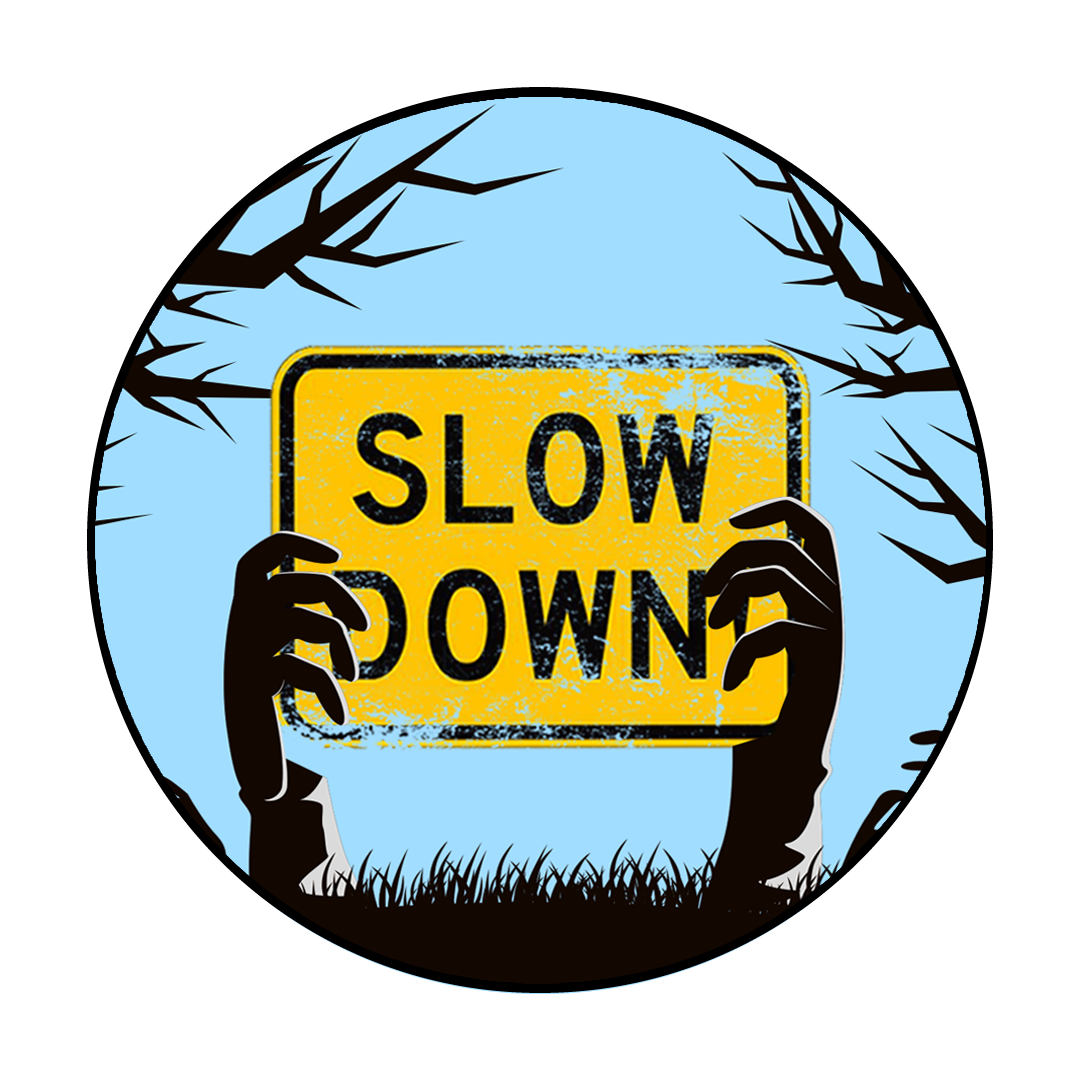 Slow down!
Slow down!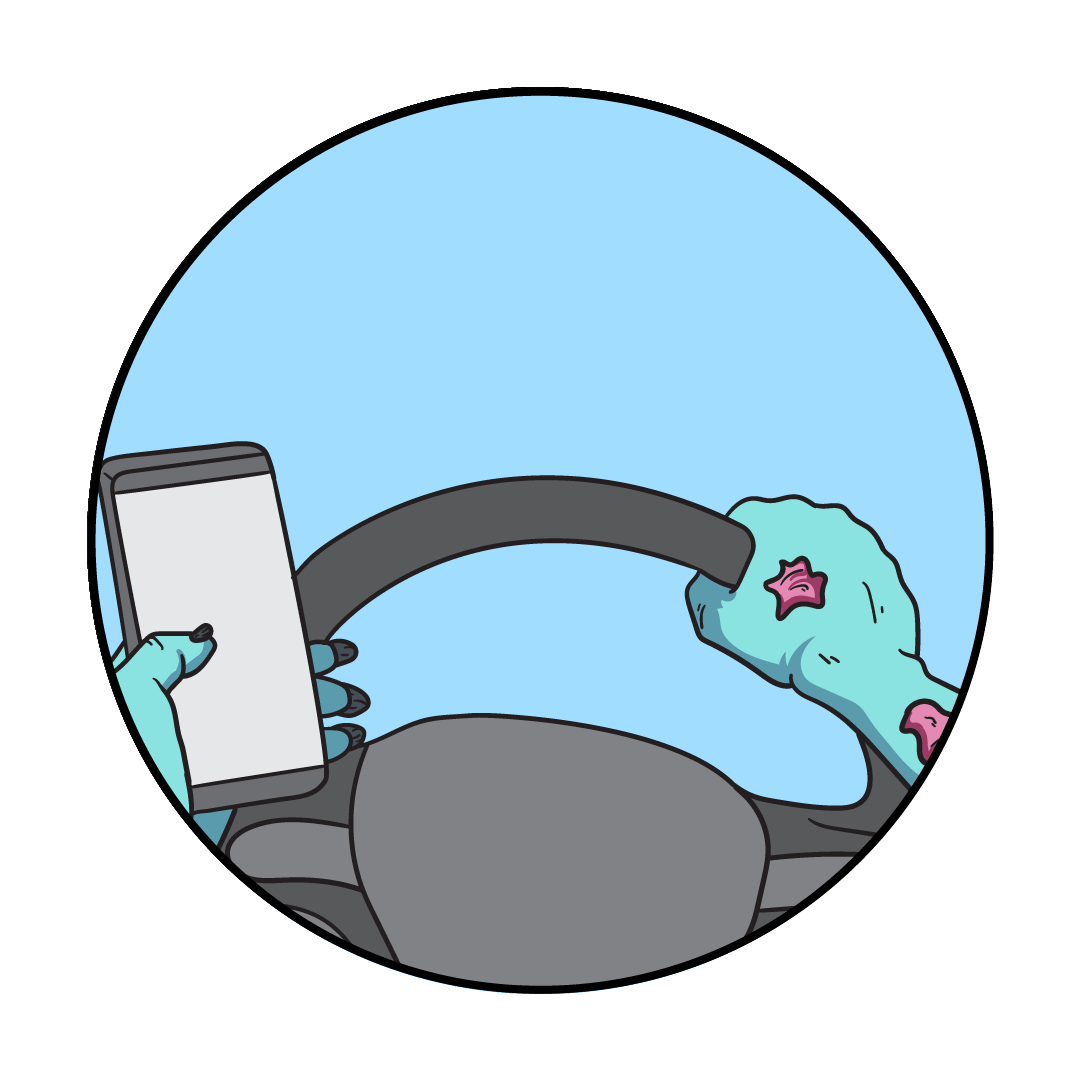 Don’t text and drive.
Don’t text and drive. Don’t drink and drive.
Don’t drink and drive. See and be seen.
See and be seen.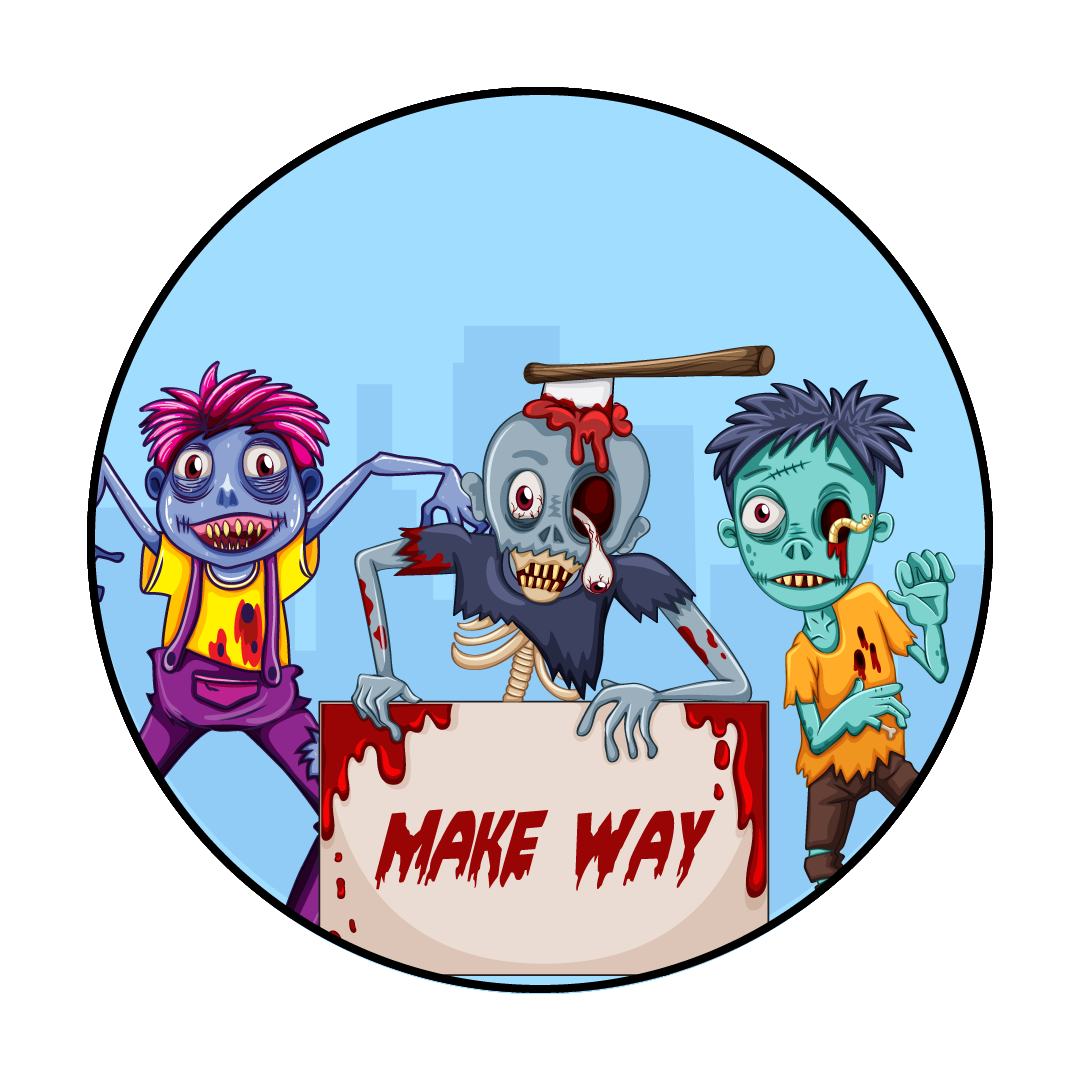 Yield to young pedestrians.
Yield to young pedestrians. Don’t pass stopped vehicles.
Don’t pass stopped vehicles. Be careful of your own costume.
Be careful of your own costume.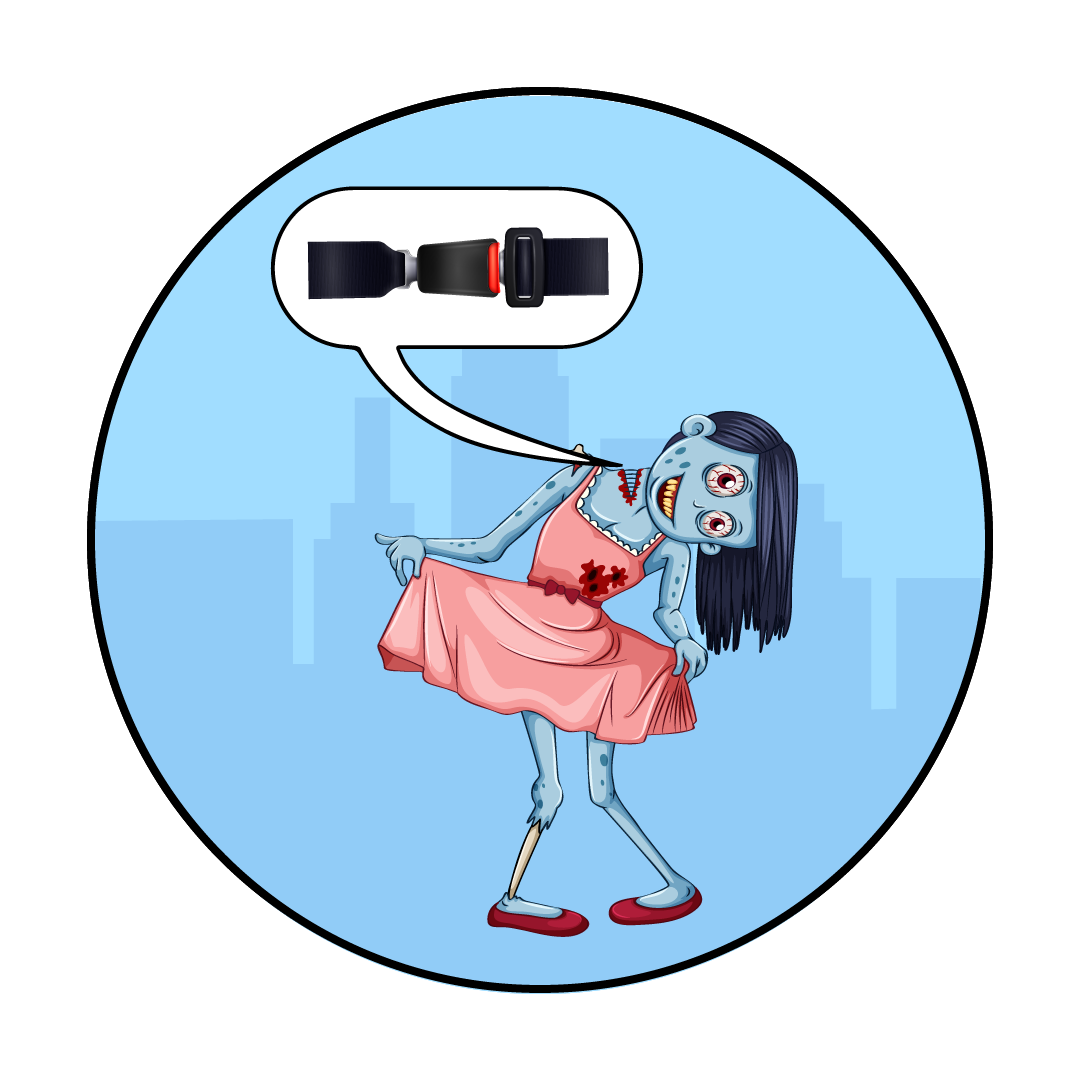
 Be careful when backing up.
Be careful when backing up.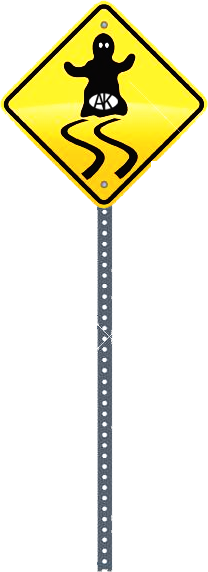 Be seen. The more visible your little ghosts or goblins are, the better drivers will be able to see them. Add reflective tape or paint to the costumes. Give your child a glow stick or flashlight to use while outside. Light-colored fabrics and other visible pieces can be worked into a costume design to help your child be seen while out on the roads.
Be seen. The more visible your little ghosts or goblins are, the better drivers will be able to see them. Add reflective tape or paint to the costumes. Give your child a glow stick or flashlight to use while outside. Light-colored fabrics and other visible pieces can be worked into a costume design to help your child be seen while out on the roads.
